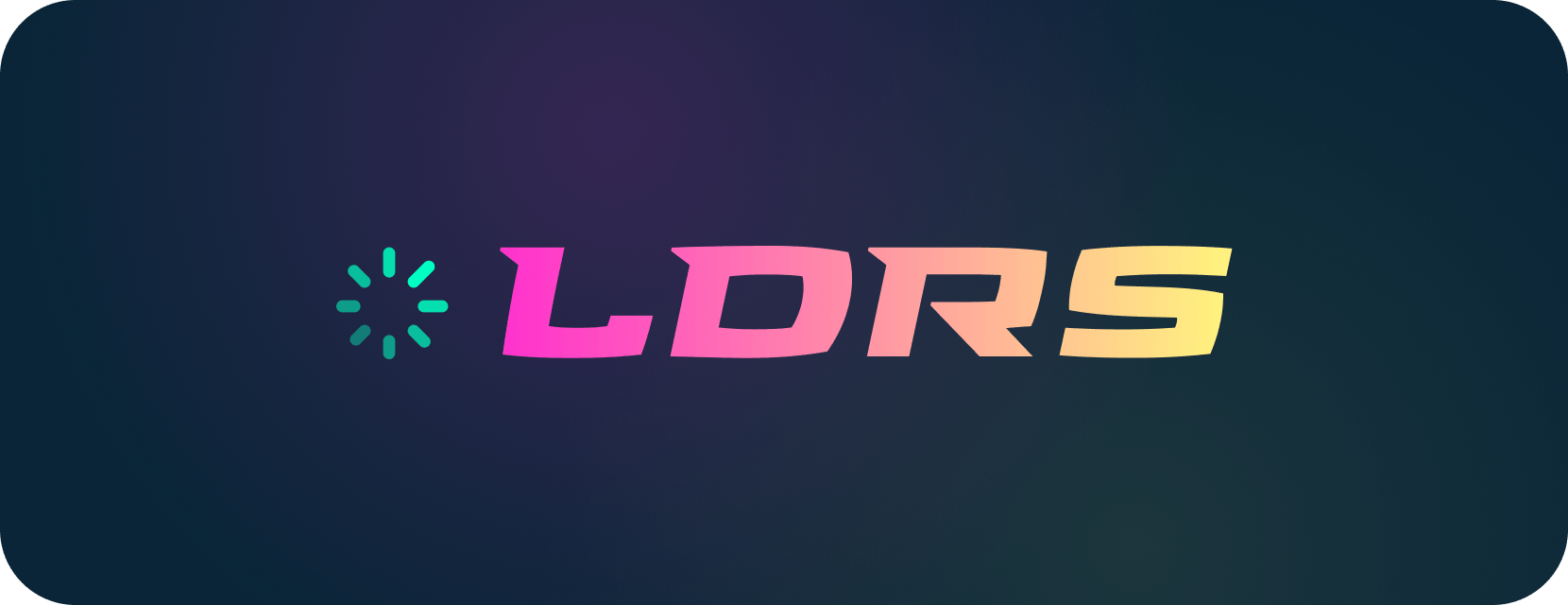LDRS
Lightweight loaders & spinners for your next web project. Available as Web and React components.
- 44 types : Unique enough to be interesting; simple enough to use in real-world projects
- Universal : Use with React, Vue, Svelte, Solid, plain HTML...
- Customizable : Set the size, color, stroke width, and animation speed to match your design
- Tiny : No frameworks. No bloat. Dues-paying member of the iddy biddy bundle committee
- Vanilla : Only want the HTML & CSS? Just select a loader on the website and go to
Source->HTML & CSS - Typed : No one likes a squiggly red underline
- No gifs : Built with HTML, CSS and some lightweight SVG
- Zero dependencies : Zero worries
➠ Visit the 🌐 Website to see them all in action.
Installation
NPM
npm install ldrsYarn
yarn add ldrsReact
React exports have been added to LDRS as of v1.1.3. They can be imported from ldrs/react and use PascalCase. Attributes are identical to the web components except they are snakeCase. When using the React components, CSS must be imported separately from ldrs/react/[ComponentName].css
import { Ring } from 'ldrs/react'
import 'ldrs/react/Ring.css'
<Ring size={50} speed={1.5} bgOpacity={0.25} />Web Components
Web components need to be registered or "defined" to work. Until registration they're just empty HTML elements that don't do anything. For convenience, LDRS come in two varieties: auto-defining and manually defined. Auto-defining elements are released as individual .js files that register themselves on import. Manually defined elements are named exports that come with a register() method.
The full list of loaders can be found on the website.
// Auto-defining
import 'ldrs/ring'
// Manually defined
import { ring } from 'ldrs'
ring.register()You can rename your loader by passing a string to the register() method. Note that custom element names must contain a dash -.
import { ring } from 'ldrs'
ring.register('my-precious')<my-precious color="black"></my-precious>Here's a very simple example of using an auto-defining loader in a client-rendered React SPA:
import 'ldrs/helix'
export default function PageSection({ isLoading }) {
return (
<div aria-live="polite" aria-busy={isLoading}>
{isLoading && <l-helix></l-helix>}
</div>
)
}Frameworks
Web components can only be run in a client-side environment, so they need to be excluded from SSR.
📖 Nuxt.js guide →
📖 Astro guide →
Options
Each loader has different defaults. You can see them on the website. Click on an individual loader and open the "source" sidebar.
size: number | string
The size of the loader. Specifically, this defines the largest dimension (height or width) in pixels.
<l-trefoil size="35" />color: string
Any valid CSS color value is accepted, so #000000, red, hsla(13, 68%, 63%, .7), and var(--my-custom-color) are all a-okay.
<l-trefoil color="papayawhip" />speed: number | string
The speed of the animation. Each loader uses this number a little differently (individual parts of a given loader might have different timings), but in general this number represents the duration of a single full animation loop in seconds, so smaller = faster. If you set speed to 0 or Infinity it will pause the animation.
<l-trefoil speed="1.75" />stroke: number | string
The width / stroke in pixels of line-based loaders like <l-waveform /> or <l-zoomies />.
<l-trefoil stroke="3.5" />stroke-length: number | string
The length of the animated element of track-based loaders like <l-ring-2 /> or <l-infinity />. Expressed as a fraction of total. Accepts a value from 0 to 1 (for example .1 or 0.14159).
<l-trefoil stroke-length=".15" />bg-opacity: number | string
The opacity of background elements in loaders like <l-reuleaux /> or <l-hourglass />. Accepts a value from 0 to 1 (for example .1 or 0.618).
<l-trefoil bg-opacity=".1" />License
MIT
 </picture>
</picture>